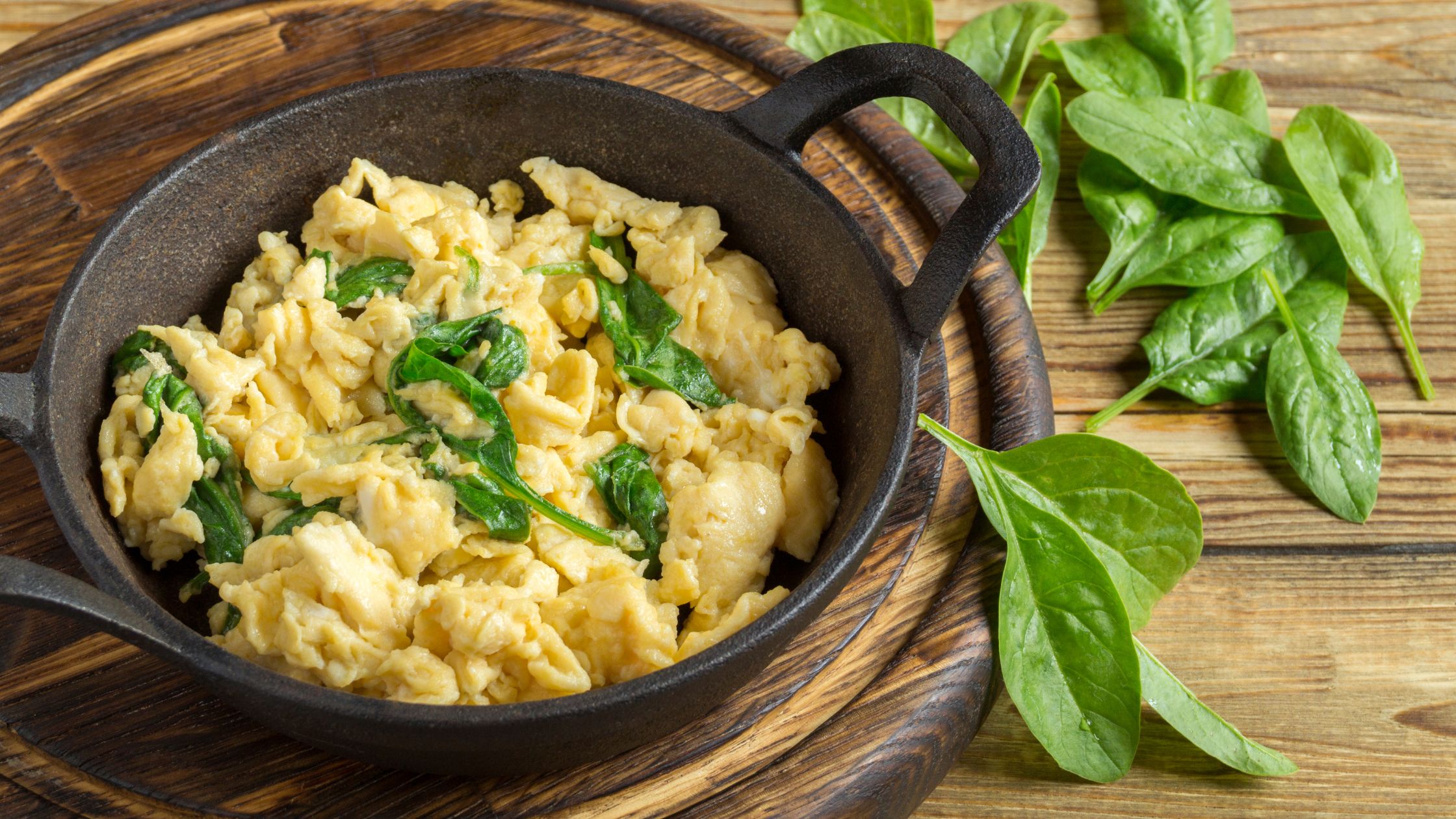
Do you have difficulty finding safe, gluten-free food at the airport?
If you are Celiac or have Non-Celiac Gluten Sensitivity (NCGS), you know all too well the trials and tribulations commonly faced when unprepared for where to eat and what to feast on.
Get some tried-and-true gluten-free hacks for air transportation from experts with celiac disease, gluten sensitivity, and more to make your journey from the airport to the plane that much safer and enjoyable.
Meet Your Guides

Laili Wasserstein is the creator of The Gluten-Free Travel Bliss and a project management professional in the field of IT. As a spouse and mother of two celiac travelers, her family must eat gluten-free without risk of cross-contamination.
Tasha Stevens, founder and CEO of Happy Hormone Health, LLC, invigorates women’s lives through the power of hormone balance nutrition and strength coaching. A Clinical Nutritionist, Tasha successfully manages six autoimmune conditions, including celiac, through diet and lifestyle.
Erin Smith is a passionate advocate for individuals with celiac disease and the founder of Gluten-Free Globetrotter. Diagnosed with celiac disease in 1981, she has spent her life navigating a gluten-free lifestyle and inspiring others to do the same.
Loredana Gogoescu of Go Beyond Gluten was diagnosed as celiac in the last year. A Canadian based in Melbourne, Australia, Loredana’s website aims to be the destination for coeliac travellers, offering gluten-free travel guides, tips, and resources.
Tarryn Fortinsky, founder of My Celiac Life, a website sharing the best products, restaurants, and recipes the gluten-free world has to offer. Diagnosed at sixteen years of age, Tarryn learned to thrive and now helps others with insights from her adventures avoiding cross-contamination while enjoying the cuisine she loves.
Marianne Perez Fransius, CEO of Bébé Voyage, is an expert in connecting families with small children who love to discover the world to each other and the brands that matter to them. Marianne has Non-Celiac Gluten Sensitivity.
Sally Cameron from A Food Centric Life is a professionally trained chef, Certified Health Coach, and professional recipe developer in Ladera Ranch, California. She has Non-Celiac Gluten Sensitivity (NCGS) and has been eating gluten-free for about 13 years.
Why Every Celiac Needs To Bring Emergency Food to the Airport

Before you leave for the airport, it is wise to pack emergency snacks in case gluten-free options are sparse or you experience flight delays and need more food than anticipated.
If you’re traveling with other people who need to eat gluten-free for whom you’re responsible, bringing safe carbs and high-quality protein is vital to help balance blood sugar and stave off hunger. Finding safe veggies is much easier than finding safe protein and carbohydrates.
Here are some healthy ideas to consider the next time you travel or simply step out of the house for the day.
“Meals I prepare are veggies (cut cucumbers, peppers, carrots), fruit (apples, grapes – I freeze the grapes, and they serve as an ice pack – totally TSA approved!!!),” Laili says.
She offers, “Stir-fry Chicken and rice is a great meal to have with us, and it’s kid-friendly. Kind granola bars and almonds or cashew nuts are always in our travel bags as emergency food.”
When asked if she brings emergency food to the airport, Tasha replied, “Always! I plan for the worst and hope for the best.
“I always pack Aloha Bars (gluten-free, dairy-free, and vegan), Protein Shakes, gluten-free chips/crunchy snacks, and fruit with us. Travelling with myself (celiac) and a celiac toddler means we always need to be prepared. We will pack enough with us to get us through the flight and then re-stock on snacks when we get to our destination.”
Erin confirms, “As someone living with celiac disease, I ALWAYS travel with gluten-free food in my carry-on bag. I usually assume I will find nothing to eat in the airport or on the plane, so I try to bring at least a full day’s worth of food whenever I travel.
“I usually bring multiple sandwiches on gluten-free bread, cut fruit and vegetables, snacks, gluten-free jerky, nuts, dried fruit, and more. I also try to pack protein like hard-boiled eggs and tuna pouches, although I don’t eat those on the plane due to the smell. I save those for the airports.
“I usually have more than enough food because I would rather overpack carry-on food than to go hungry during an unforeseen travel delay.
“The good news is that any unfinished food can usually be eaten at your destination. Be sure to check your destination for any restrictions on bringing certain foods into the country,” Erin concludes.
Loredana shares, “I always bring emergency snacks when travelling!
Typical items Loredana might bring include:
- gluten-free protein bars
- trail mix
- fresh fruit
- a couple of cups of noodles,
- gluten-free baked goods I sourced beforehand
- and a homemade cheese and veggie sandwich
“I try to bring a mix of protein, fibre, and healthy fats to keep me full. The amount I bring depends on the flight length, connections, and potential delays, so I gauge it based on those details,” she notes.
Tarryn always travels with a backpack full of snacks and foods including:
Bars: Larabars, Kind Bars, RXBars. Nuts/Trail Mixes.
Crackers: Simple Mills or Mary’s Gone Crackers in a ziplock bag.
Rice Cakes or GF Pretzels: Especially good with nut butter packs (simple yummy snack!)
Fruit: Bananas or apples.
Instant Oatmeal Packets (GF-certified): Just add hot water from a café! A simple, yummy and filling option.
Finding Gluten-Free Food While Traveling

Many celiacs belong to online communities and have found tools to help them source safe food while traveling, almost universally using one app in particular.
Let’s find out what’s working and how the celiac community finds safe eats on the go, wherever their travels take them.
“I use the ‘Find Me Gluten Free’ app for all locations we travel to, including airports.” – Laili
“I often ask for assistance. There are a few websites like FindMeGlutenFree.com that I have used to identify if there are gluten-free options reported by other travelers. I have tried to use other sites, but sometimes they are outdated as the airlines are shifting or changing meal options on the regular.” – Tasha
“When traveling, I always try to do a ton of research before I go anywhere. This will include asking around for airport recommendations. The Celiac Travel Facebook group is a great place to learn about gluten-free airport options. I also use the FindMeGlutenFree app to look for gluten-free options. The celiac travel community is tight-knit and we help each other out through social media.” – Erin
“I use Find Me Gluten Free locally and abroad, and join local gluten-free/coeliac/celiac Facebook groups before my trip to look for tips and ask any questions.” – Loredana
Tarryn says, “I do a little bit of everything when it comes to planning to eat whilst travelling.” She categorizes some of her favourites as follows:
- Find Me Gluten Free – The holy grail app. It crowdsources reviews from GF travelers and includes airports, restaurants, and hotels. Pro tip: you can filter by airport, location and specific requirements (vegan, dairy, etc).
- Google Maps – Search “gluten-free” in your specific location — some lounges and restaurants show up with menu labels, photos and reviews!
- Word of Mouth – and general online research
- Gluten-free bloggers/social media
Find Me Gluten Free App

We reached out to the founder of Find Me Gluten Free, Jason Elmore, and he provided us with resources on their website dedicated to air travel, including:
- The Top 250 best rated gluten-free friendly places at airports
- The best rated travel lounges for eating gluten-free
- An alphabetized list of airports and the gluten free options they provide
In January 2025, Jason’s team sent out a Safety Quiz for members of Find Me Gluten Free to complete paired with a short tutorial for better understanding cross-contamination before starting the quiz. The reading material is specific to safety for people who must avoid cross-contact.
The goal?
To refine the Safety Ratings on their app and equip their members with the knowledge necessary to guide others on finding safer food options in the FMGF community.
As of March 21, 2025, passing the Safety Quiz is now a requirement for leaving a Safety Rating on Find Me Gluten Free. People who have not taken the Safety Quiz can still leave other ratings, just not for Safety.
If someone has passed the quiz, other users will see a Safety Badge on their profile and next to their username throughout the app. Safety Badges are visible to other users when browsing the app and reading reviews.
Jason Elmore, a celiac himself, says, “Find Me Gluten Free’s community includes a large percentage of people with celiac disease and people who must avoid cross-contact with gluten. We initially introduced Safety Ratings to specifically help these people when choosing a place to dine safely.”
“This change will provide better education for our community members and improve the quality and trustworthiness of Safety Ratings overall on Find Me Gluten Free.”
Best Gluten-Free Restaurants in Airports
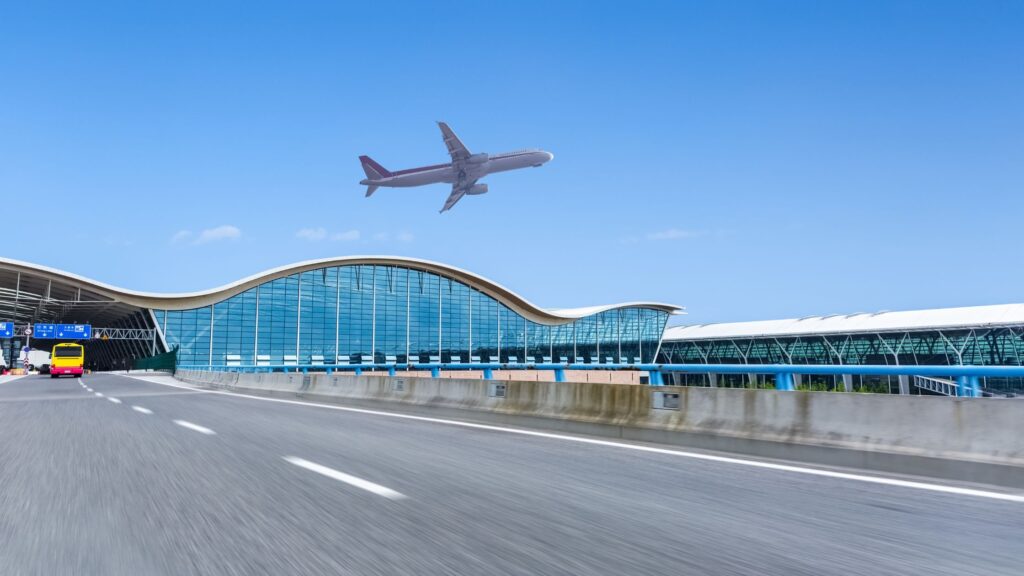
Now that you have the tools to find safer food options at the airport, it’s time to hear about some standout experiences that you’ll want to take into consideration on your travels.
Remember, it is always good to do your own research before going, as restaurants and menu items may change over time.
LAX (Los Angeles International Airport) – Terminal 5
Tarryn’s pick in LAX is a restaurant called, Lemonade.
She describes the food as fresh, California-style eats with plenty of gluten-free options including salads, meats, and vegetable sides, noting, “I found these were clearly labeled and were able to easily accommodate as needed.
“Most restaurants do gluten-free menus and at least gluten-free options available. I would definitely speak to a staff member or even a restaurant Manager to understand if they feel they can accommodate or not, and decide based on your specific comfort level.
“Many had told me they were able to accommodate, however keep in mind there can almost always be some possible cross-contamination that COULD take place, as many do have gluten-containing foods in their kitchen.”
YYZ (Toronto Pearson International Airport) – Terminal 1 & 3
Eating gluten-free in Toronto’s Pearson International Airport is easy with Freshii, with multiple locations at YYZ. The company has restaurants located in other airports in Canada as well.
Tarryn assures, “Freshii is a safe bet for gluten-free travelers. I would usually select build-your-own bowls, salads, and smoothies. Gluten-free sauces and rice noodles available as well, however I always go for the build-your-own salad bowls.
“Pro tip: have the server wash their hands and put on new gloves!”
FCO (Rome Fiumicino, Italy) – Terminal 3
Venchi in Rome’s Leonardo da Vinci-Fiumicino Airport serves gluten-free gelato and certified GF cones.
Tarryn exclaims, “It’s dessert paradise for gluten-free travelers, and extra special when you land in Rome!”
Heathrow Airport, The George, Terminal 5
Laili’s pick is Heathrow Airport’s restaurant, The George, located in Terminal 5.
She writes, “They had a marked menu with items that can be prepared gluten-free. The language used was ‘gluten-free.’ The restaurant is not dedicated GF, so they told us there is always a chance of cross-contamination, but they will advise the kitchen that this is a celiac order.
“The food was great, and there were no gluten ‘side effects’ after the meal. We will visit again when at Heathrow.”
Sacramento, Terminal B
Tasha says Sacramento Airport’s Terminal B has many local restaurants that have taken up residence. This airport is in the state of California.
She says, “Sacramento strives to be one of the largest ‘Farm to Fork’ communities in the nation, so many of their restaurants aim to be accessible to everyone – including Celiac. Iron Horse has a few items that are all marked ‘gluten-free,’ but they were not 100% celiac-friendly due to cross contamination.
“Austin Airport (Texas) is similar to Sacramento, and it is filled with local restaurants and spots! I went to Second Kitchen and was able to enjoy a few GF salads and appetizers.”
Both menus Tasha referenced had “gluten-free” items that were marked. They were gluten-free or you had the ability to make many items 100% gluten-free with a bit of modification. That said, they were all cross-contaminated due to the preparation.
LaGuardia Airport, Terminal B
Erin recently traveled through the newly renovated terminal B at LaGuardia Airport in New York City.
LaGuardia is famed for being where the locals fly in and out of and offers a stunning view of the Hudson and Statue of Liberty upon descent for those flying into this New York airport.
She exclaims, “I was pleasantly surprised to see a full display of gluten-free snacks for purchase. While this doesn’t make a meal, it is nice to actually see the words ‘gluten-free’ in the display.
“I have also noticed that CIBO Express has added more gluten-free snack options to their stores. I did notice pre-made gluten-free sandwiches at JFK (New York) but I stayed away because it was unclear how and where the sandwiches were prepared.”
Charles de Gaulle, Marks & Spencer, Terminal 2E
Internationally, there is a Marks & Spencer shop in terminal 2E in Paris Charles de Gaulle airport (France) which is a great place to find loads of gluten-free options including pre-made sandwiches.”
Sydney, Australia, Domestic
Loredana ate a “naked burrito bowl” from Mad Mex at the Sydney, Australia, domestic airport, relaying, “They change their gloves when you tell them you’re coeliac, and they seemed to understand the disease well and took the necessary precautions to ensure a safe dining experience.
“The menu board has ‘GF’ next to the items that can be made gluten-free. I felt safe enough, and I didn’t get sick.”
Erin chimes in, “I would be wary of chain restaurants in airports. People often assume that because their local chain can accommodate gluten-free at home that they should be able to do the same at the airport. WRONG.
“Airports don’t always have the same protocols as a franchise location might have such as a dedicated gluten-free fryer.”
Always ask if there are separate fryers. Sometimes, the only safe option, albeit not the greatest health wise, are french fries, but even this may not be the case in the airport given smaller quarters for cooking and limitations inherent to being in the airport per Erin’s observation.
Labelling of Gluten-Free Food in Airport Lounges
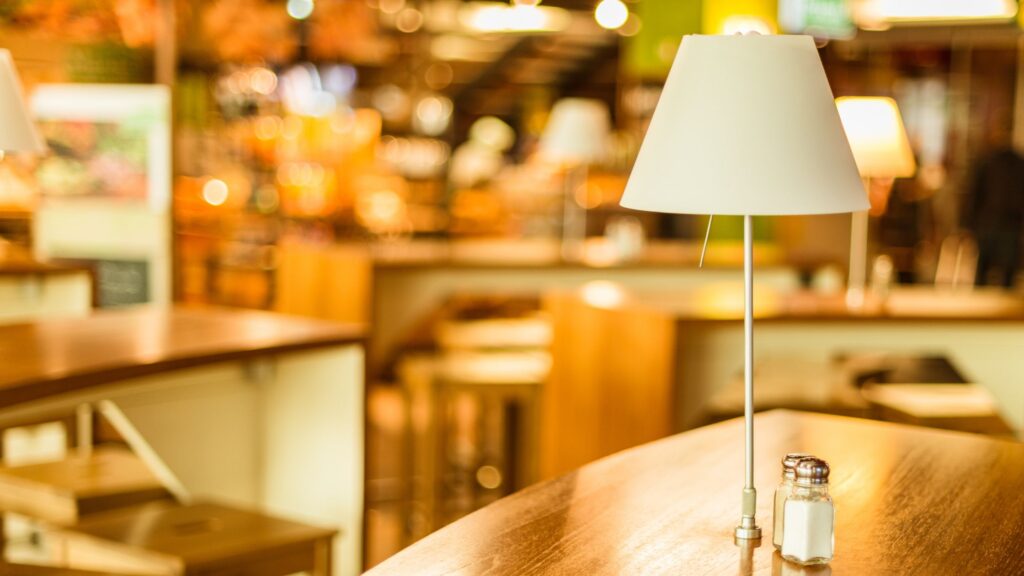
Neptuno Lounge, Madrid Barajas, Terminal 4
Marianne recounts, “A year and a half ago, we flew through Madrid Barajas and I’m so glad that we had a long layover over dinner time. We went to the Neptuno Lounge (Terminal 4 – Satellite) and I was blown away by the food options.
“They had 3 separate buffet bars, each one dedicated to starters, mains and desserts. Not to mention drinks and snacks buffets. Each bar had a menu with the half dozen available options including icons for allergens and food sensitivities (gluten, dairy, vegan etc.)
“They offered small, already plated portions. I had a delightful cold green pea soup and then a gazpacho to start. Then I had a flavorful bean and chorizo stew. My kids enjoyed the penne with tomato sauce (no gluten issues for them!) and my husband liked his beef stew and his paella.
“We were so full from the savory foods that we only had fresh fruit for dessert. But they also offered chocolate mousse and a fruity panna cotta, amongst other GF sweets.
“We’ll definitely organize our travels to fly through Madrid more often so we can visit the Neptuno Lounge again!”
Ginko Sky Bar, VIP Lounge, BCN (Barcelona El Prat, Spain) – Terminal 1
Tarryn shares, “If you have lounge access or want to have special access, Ginkgo offers several gluten-free small plates and great drinks. The staff are super accommodating and in my experience, have really understood Celiac Disease.”
Other airport lounges that do a good job of labeling their food, from Tarryn’s perspective, include:
Toronto Pearson (YYZ) Lounge: Air Canada Maple Leaf Lounge – Terminal 1
Buffet-style with a few GF-labeled options (soups, salads, fruit, sometimes grilled chicken). GF crackers and snacks available; staff will help when asked.
Newark Liberty (EWR) Lounge: United Polaris Lounge – Terminal C
Excellent sit-down dining with GF labeling on menu. Staff understand dietary restrictions and can modify dishes.
Eating Gluten-Free on the Plane

Do some airlines pay more attention to dietary restrictions than others?
So far as celiac meals are concerned, there is usually a ‘gluten intolerant’ meal if you order ahead, but snacks are harder to acquire. Let’s see what our guides had to say about airline choice and GF finds in the air.
“We don’t particularly choose the airline because of a gluten-free meal. In my experience, the meal depends on the local airport location and can either be bland or nice. When flying with United or Lufthansa, we would choose the gluten-intolerant meal but I always bring food from home for them.” – Laili
“Personally, I do not have a favourite airline or typical airline I select based on their gluten-free meals and accommodations available. I do travel with my own food and snacks regardless!” – Tarryn
“Hawaiian Airline does a great job working to accommodate gluten-free needs! They have a ton of gluten-free snack and meal options that are available for purchase that are quite decadent and enjoyable. They are not overly priced for an airline and what you get. Which makes the experience to the islands even more enjoyable and relaxing.” – Tasha
“I don’t have a preference yet, but I’ve flown with Air Canada, where you can order a ‘gluten-intolerant meal’ in advance (this should always be done anyway!).
“My meal was okay, and I didn’t get sick. However, they completely forgot to load my gluten-free meal on the return flight because my original flight was cancelled… which is why it’s essential to pack your carry-on with lots of food for situations like this!
“Luckily, I had enough and was fine. Jetstar in Australia also offers food for purchase on board, like gluten-free cup noodles.” – Loredana
“Honestly, I never rely on an airline to provide me with gluten-free food so I don’t have a favorite airline. It is just too risky to depend on them to get it right.
“Every airport has a different catering company and there are too many errors that can be made along the way. That said, I find that flying back to the US from Europe is much more reliable for getting a true gluten-free meal due to better labeling and protocols.
Airlines like Delta and JetBlue are starting to have more gluten-free snack options on board. In addition to celiac, I am also sensitive to oats so this is an added issue that I need to look out for in some of the newly added options.” – Erin
Oat sensitivity is not uncommon among celiacs and those with NCGS.
The protein structure of oats, even if ‘gluten-free,’ mimics the protein structure of gluten and your body may not be able to tell the difference.
For that reason, oats (and the avenin they harbor) may be off the menu should they create undesired responses in your body, like constipation or itchy skin, for example.
Healthiest Gluten-Free Snacks at Airport Convenience Stores
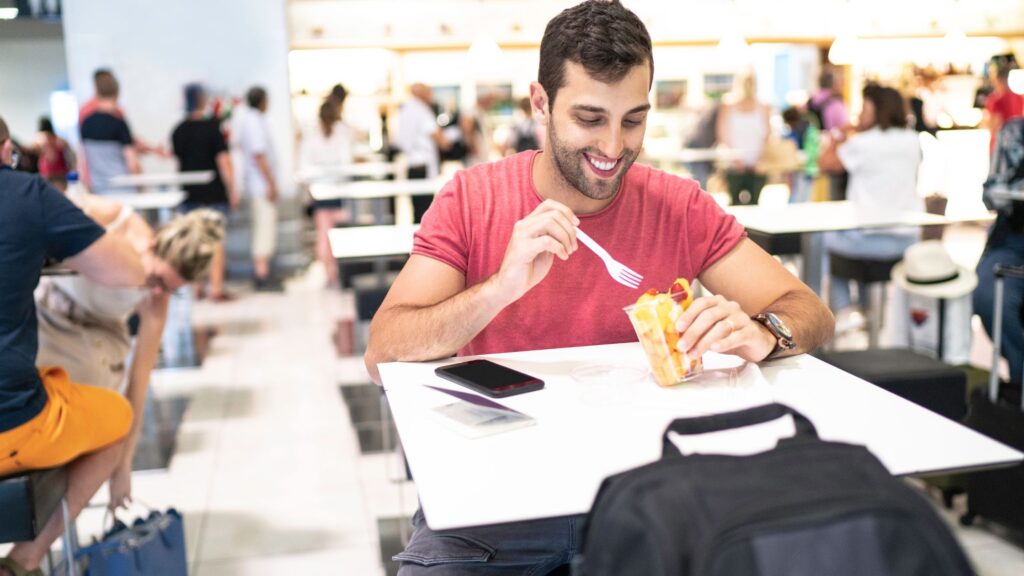
Forgot to bring snacks? Here are some tried and true recommendations for finding gluten-free snacks in the airport when you’re waiting at the gate.
“The healthiest food options at airport convenience stores are bananas and apples. Sometimes yogurt. Super expensive but safe to eat!” – Laili
“I have found fresh fruit (always gluten-free), RX bars (at Newark Terminal C), which are whole ingredients gluten-free and dairy-free, as well as Saba Hummus without crackers and celery sticks. On rare occasions, I will find 100% natural beef/turkey jerky without any gluten or that will be 100% celiac-friendly. Unfortunately, these options are fairly limited on protein but great if you are in a pinch!” – Tasha
“When purchasing airport food, I like to indulge in gluten-free snacks when I see them. Otherwise, I usually will stick to pre-packaged food like cheese sticks or jerky that is labeled gluten-free. I also buy cut fruit, veggies with dip, or yogurt without any granola. You can get creative with the naturally gluten-free options you can find in the airport and put together a hodge-podge meal.” – Erin
“Fresh fruit like apples or bananas is a great healthy snack at airport convenience stores if available. Nuts, mixed seeds, and yogurt are also good, protein-packed options. I always double-check the back of pre-packaged goods to make sure they are gluten-free by ingredient.” – Loredana
“Thankfully the airport convenience stores are SUPER helpful! They are labelled and have LOTS of great options. Some of my go-to’s are: fruit and nut bars, yogurt and even veggies with dip!” – Tarryn
Is Wheat Different in Europe and Safer for Celiacs?

For anyone who has traveled to Europe and accidentally ingested gluten while there, you may have noticed that the telltale symptoms of gluten exposure are not readily apparent.
Why is that?
Is there a difference between gluten in Europe vs. North America and how it impacts symptomatic celiacs or those with NCGS?
While I am not advocating that someone eat gluten containing products freely in Europe if they are celiac or unable to digest gluten well, there may be fewer consequences for doing so should you ingest certain wheat or gluten containing products there unknowingly or in a situation where there are no other options and you need to eat to maintain blood sugar levels.
Tasha remarks, “There are some stark differences in farming and baking in Europe compared to North America that can lead to differences in symptoms for those living with NCGS.
“Europe has a higher production and use of soft wheat (compared to hard in North America), which naturally has lower gluten levels. There is also an increase in fermentation in baking processes, which has been shown to reduce gluten (for example, sourdough breads).
“With these lower gluten-containing foods, some individuals living with NCGS can often enjoy traditionally gluten-containing products (like breads, pastas, crackers) without any issue while visiting Europe.
“Unfortunately, living with Celiac disease, this does not change anything – because exposure to any type of gluten and amount is going to trigger an autoimmune response.”
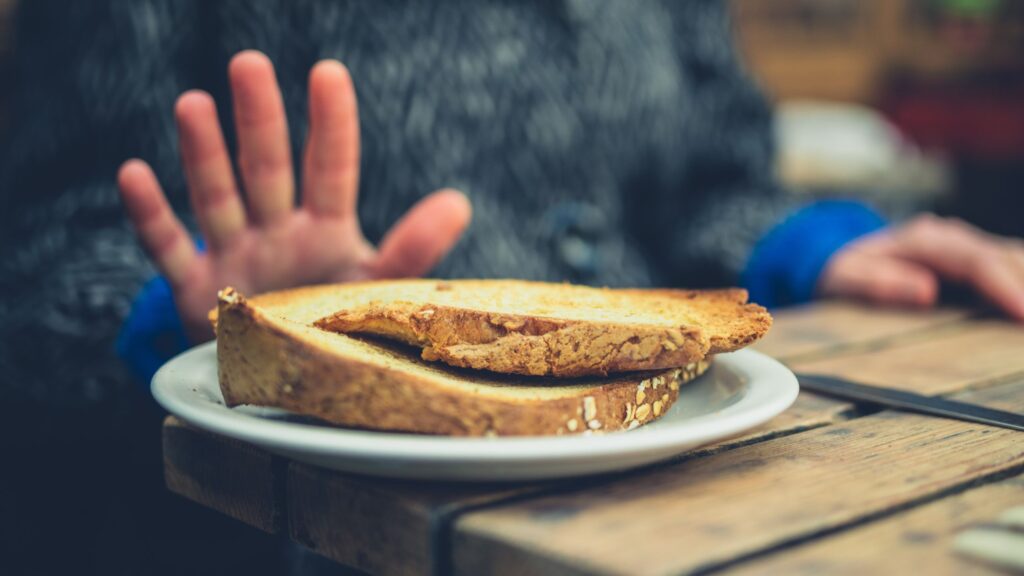
Sally Cameron, chef, certified health coach, and recipe developer, lends her perspective on the topic.
She acknowledges, “Because I’ve been GF so long, when we travel (and we travel internationally quite a bit), I steer clear of all gluten, so I have not experienced what some of my clients used to tell me…and that is when they traveled in Europe they had no issue eating bread, pasta, or other gluten-containing foods (I was a personal and private chef and Health Coach).
“One thing I do know, it’s a common farming practice in the US to spray a drying agent on wheat crops shortly before harvest, and that is glyphosate. In Europe, this is not allowed or at least is uncommon. Glyphosate can be a gut irritant and could still trigger people.
“It could also be due to different wheat varieties grown in Europe than in the US. Farmers here tend to grow hard red wheat with higher gluten content than heritage or softer wheats grown in Europe. This is one thing I always suspected in talking with my clients, and they did too.
“Another consideration is that many artisanal breads created in Europe are fermented – think of sourdough – and this fermenting process breaks down gluten, making it easier for some people to digest.
“Fermented doughs are different than what is often used here in bread making. Much of the bread in the U.S. is made with quick-rise or rapid-rise yeast, giving the body less time to process or break down gluten proteins (the two main ones being gliadin and glutenin).
“One other observation I’ve read about in recent research is that people with NCGS may tolerate some forms of gluten better than others, especially when processed differently.
“Additionally, some people may actually have a wheat allergy (a different response), not the gluten protein itself; hence, we’ve seen companies (like King Arthur) come out with gluten-free flour blend that has wheat, but the gluten is removed. That’s been pretty confusing for a lot of people (including me when I first heard it).”
However, as research continues, many people feel better eating gluten-free.
Sally emphasizes, “The good news is that today, it’s easier than ever to eat gluten-free, but it is still an overwhelming transition for a person who is told they are either Celiac or NCGS and must stop eating gluten (and all of the places it hides).”
Recovering From “Getting Glutened”

Eating gluten by accident happens and can be even more likely in transit, where safe eating options are scarce or poorly labeled.
How can you recover from getting ‘glutened’ when traveling? Discover some tips and ways to cope.
Laili remarks, “My son’s way to recover from getting ‘glutened’ is by drinking a lot of water and resting. I always pack activated charcoal pills as well.”
Erin concedes, “Unfortunately, the only way I can deal with eating gluten by mistake is going through some pretty rough illness. I get sick within one hour of eating gluten, and then I usually feel like I have the worst food poisoning of my life.
“The last time I got ‘glutened’ was when I was traveling, I was pregnant and in Germany. I was violently ill for 48 hours. My body just has to get the gluten out, and then I need days to recover. I try to stay hydrated and then eat small, bland meals when I can. There is no magic pill or supplement that will fix an accidental glutening.”
Loredana shares, “I’ve never been glutened ‘in transit,’ but I was unfortunately recently glutened at a restaurant in Bangkok. The most important thing is to remain calm, drink lots of water, and rest as needed. Everyone’s body and symptoms differ when it comes to accidental gluten consumption, so there’s no one-size-fits-all approach.”
Tarryn offers, “That is truly my number 1 fear when travelling. Sadly. Being glutened can sneak up even when you’re careful, especially with sauces, untrained staff, or unlabeled snacks. But if it does happen, there are ways to bounce back — or at least survive it without letting it ruin your trip.
“I highly recommend traveling with Pepto-Bismol, gas ex, empty large water bottles and tea! These have always been my go-to’s to bring along. I have been extremely lucky, and haven’t gotten glutened whilst travelling in a VERY long time, however these things to happen.
“You must be prepared and do whatever necessary to keep on going and enjoy, not to let it take over your entire travelling experience!”
Tasha admits, “It does happen, and I always say it is a risk I assume to enjoy life, but getting back to it, I focus on reducing inflammation and cortisol – which are known culprits of prolonged flares or additional flares.”
When preparing for travel, Tasha eats at home for at least a week to allow her body to avoid any unintentional cross-contamination and focus on adding in anti-inflammatory foods to help reduce inflammation, cytokine production, and interlukin production (all huge culprits of flares)
Here’s Tasha’s celiac regiment to bolster her gut in preparation for travel:
- 1 cup of colorful fruits/veggies a day. Think colored inside and out, such as strawberries, raspberries, carrots, and bell peppers, to provide antioxidants and polyphenols.
- 1 cup of leafy greens a day to reduce cytokine and protect healthy cells from damage. They are also a great source of vitamin K and magnesium. Think kale, spinach, beet root tops, romaine lettuce, and mustard greens.
- 1 cup of sulphur-rich vegetables a day to improve the mitochondrial health of the cell, suppress inflammatory pathways, and improve detoxification of the liver and kidneys. Think onions, garlic, asparagus, broccoli, Brussels sprouts, and artichokes.
Planning Your Next Trip
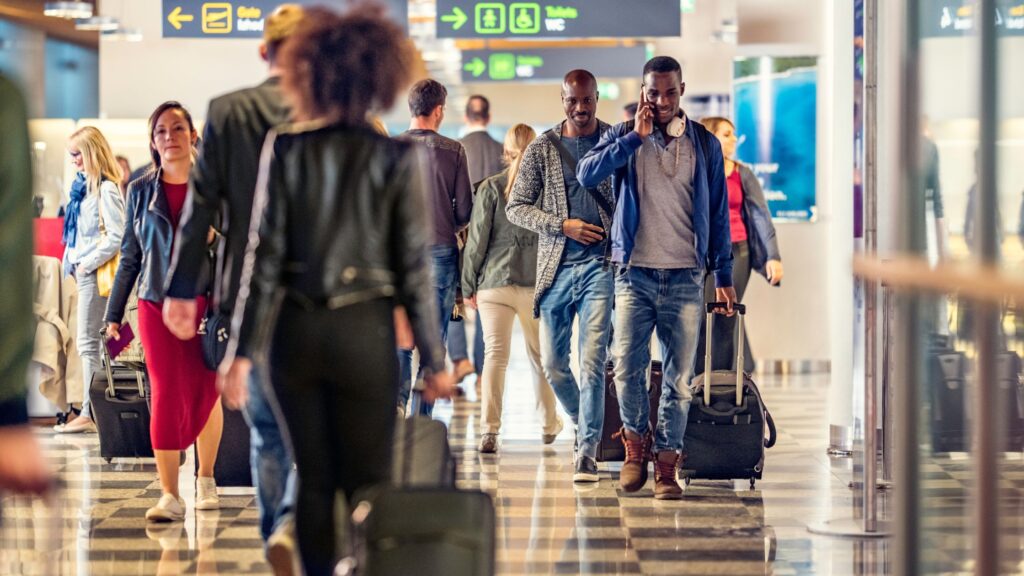
Armed with this information, you can have even safer travels with the benefit of a community of celiac travelers to connect with.
We encourage you to draw from the experiences of the celiac travel community, wherever you may find them, be it on Find Me Gluten Free or a group on social media.
Remember, you can gain access to lounges here on TravelMint to enjoy the benefits of airport lounges and other great adventures along the way, like renting a car, finding an airport hotel, joining Priority Pass, and more.